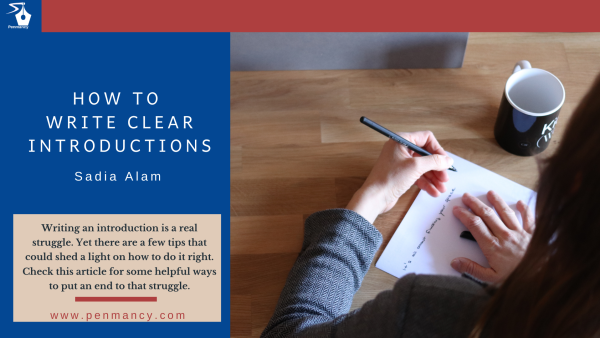
Have you started writing your story during break and are still waiting for someone to read it? But what about writing introductions? The introduction is the first impression which convinces a reader to read further or not. Often, it’s hard for a newbie writer to write a good introduction. So, let’s see about making it better now, shall we? In this article, I’ll discuss with you how to write powerful introductions that turn random browsers into readers. Article introductions matter, and here’s how to make them count.
Introductions generally consist of three main parts:
1) A statement of what you are going to discuss.
2) A statement of why it is essential.
3) A preview of the general structure of your discussion.
An excellent way to improve your introduction is by practicing them. It might be hard at first, but writing good introductions will come naturally to you with practice and time. That’s why I’m here today to share quick tips that will help you write good introductions:
- Keep your first sentence short:
A good introduction tells the reader in one sentence what you are going to talk about. Later on, you can expand on it and provide context for what you are discussing. For example, if writing an introduction for this post topic, your first sentence could be, “This article will explain to you how to write clear introductions.”
- Grab readers’ attention with a question or a startling statistic; make it relevant to them, if possible. Highlight the key takeaway:
Grab readers’ attention with a question or a statistic that is surprising, shocking, or something they can relate to. Of course, this has to be relevant to your article topic. Try to illustrate how it’s essential for them to — even if it’s not as apparent as you might think at first. But don’t overdo the creativity part. Just keep it simple. For example, your second sentence could be, “Is this how you write an introduction?”
- Keep the focus on how they’ll benefit:
Focus on how your readers will benefit from reading further and provide a reason for them to read (not what’s in it for you). For instance, you can write something like, “You’ll learn how to write clear introductions in these five straightforward steps.”
- Keep your introduction short:
Keep it short — typically between two and five sentences, no more than 200 words – so that readers are motivated to continue reading without feeling bored or overwhelmed. True, you may want to share every bit of information, but hold yourself back and avoid cramming too much into a single introduction.
- Inform readers of a common misconception about the topic, and then guide them to a better way of thinking:
This one is pretty straightforward. You can inform readers of a common misconception about the topic or introduce them to an opposing argument that they may not be aware of — and then provide insight into why this argument doesn’t work. This will help you engage your audience right away. For example, “Some people make it their goal to write ‘perfect’ content, thinking that writing is about being flawless. But it’s not.”
- Give them a preview of the kind of detail they can expect to find later in your piece (e.g., case studies, surveys, anecdotes):
Give them a preview of the type of detail they can expect to find later in your article. This will attract more people to read further. For example, you could write, “In this article, I’ll walk you through 4 specific steps that will show you how to write clear introductions every time.”
- End with another great quote that will resonate with your target audience:
End your introduction with another great quote that will resonate with your readers. This is a good way if you are writing an article that’s based on selections. For example, “The best things in life are often waiting for us just around the corner – all it takes is the courage to proceed.”
To help you out with this, here are two examples of effective introductions:
1) When we last talked about user onboarding on Appcues, we discussed the importance of this critical growth tool and some common mistakes companies make when designing their user onboarding flows. I’ll share some tactical tips to help you design a great user onboarding experience in this post.
Here’s an intro paragraph from one of my blog posts:
In our last post on continuous deployment, we talked about the importance of speeding up your software development cycle and making sure you deliver value to your customers promptly. But without proper monitoring, this process might not work out so well. Let’s look at some monitoring tools that can help you track major KPIs before it’s too late.
Conclusion:
This blog ended up being longer than expected! But I hope it gives you a good idea of how to write a powerful introduction. Of course, no two openings are the same, and this information is primarily general guidance. There’s much more to write an influential intro, but hopefully, this post has been helpful!
Before we end here, let me tell you one final thing — if you can’t create a strong intro, it means the quality of your article is poor, and you need to improve on that.
